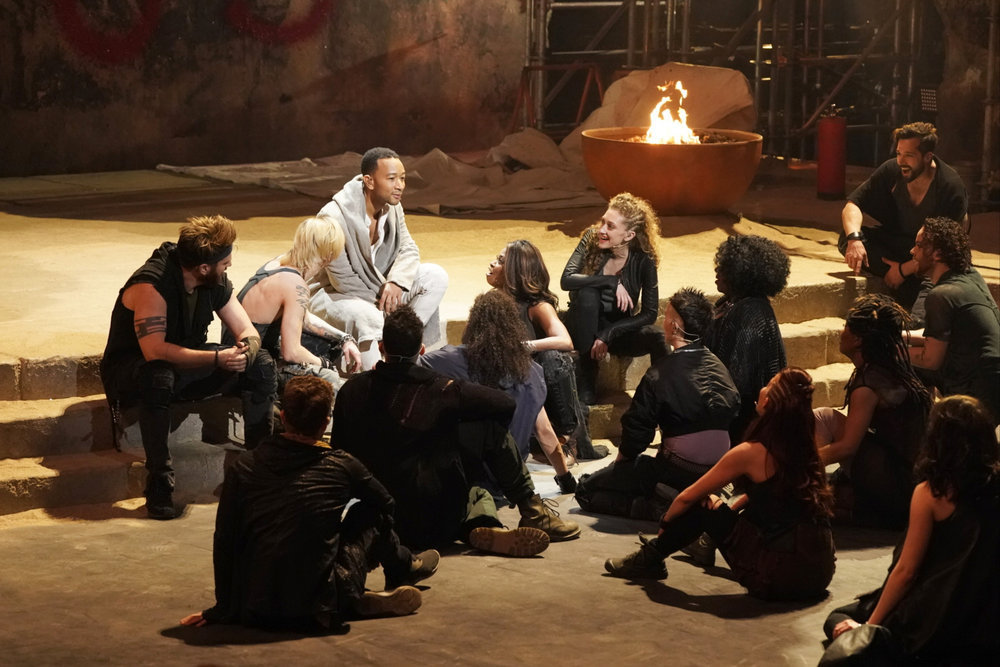Every once in a while, you encounter a piece of art that makes you remember why you love that particular art from. As we navigate everyday life and deal with the stress of classes, exams, and social life, it becomes easy to forget your passions, orat least keep them locked in the back of your mind.
Even though I live in New York and Broadway isn’t far away from my home, tickets are still expensive. But I still try to see at least one production a year, as the scene on Broadway is constantly changing. Last year, my family had been interested in a small musical called ‘Come From Away’ that opened in 2017 that was known as “the 9/11 musical.” Luckily for us, there was a sale for the show this summer. Cut to one Thursday afternoon in August, we were seated in the Schoenfeld Theatre, unaware of what we were about to experience.
‘Come From Away’ is much more than “the 9/11 musical.” The story is based on true events that start on September 11, 2001 when two planes crashed into the World Trade Center’s towers in New York City. Themusical, however, doesn’t take place in Manhattan. Instead, it takes place in the small town of Gander, Newfoundland which opens its community to 38 planes that are forced to land when the U.S. airspace was closed that fateful morning. The musical asks the question that most people never ask when learning about the events of September 11: “What happened to all the other planes flying that morning?”
That question is answered during the first number of the musical – the planes had to land immediately, without question. Thankfully, Gander’s airport was big enough to house all the planes that were grounded that day. The airspace would be closed for five days after the attacks. This left the 38 planes, which held around 7,000 people, stranded in Gander, a town with a population that numbered below 10,000. The musical might start on September 11, but the show isn’t necessarily about the tragedy of the event. It is about what occurs in the days following the attacks. It is about the warm embrace of a community who, instead of running away in fear, ran toward a problem and helped in any way it could.
Director Christopher Ashley designed the production in a way that leaves nearly everything open to the audience’s interpretation. The set is practically non-existent; only a few tables and chairs sit on stage. There is no pit, instead, the small orchestra shares the stage with the actors. Onstage, twelve actors hold the responsibility of portraying the 7,000 “plane people” and the locals of Gander. They are constantly changing from character to character on stage right in front of the audience’s eyes.
All of these techniques are a callback to old theater, and they all work seamlessly. The audience doesn’t need a grand set, a thirty-piece orchestra or a forty-piece ensemble to tell this story. Even though thousands of people are being represented in the show, it is an incredibly personal and intimate production. Ashley knew that all he needed were twelve phenomenal ensemble actors, some instruments, and chairs. With direction by Ashley and music and lyrics by Irene Sankoff and David Hein, ‘Come From Away’ is everything live theater is supposed to be. It is simple yet powerful, uplifting and emotional. It causes reflection and provides a cathartic experience that you welcome but don’t expect. It is why we tell stories.
Each actor plays at least one plane person (referred to a “come-from-away” by the locals) and one resident of Gander, all of whom are based on real people that lived through the event. The play features the stories of the stranded, like American Airlines’ first female captain, Beverly Bass. A gay couple, both of whom have the same name, are also featured. A Muslim man on his way to Washington DC, and a woman from Queens whose son is a volunteer firefighter reveal their stories to us on stage. Each actor is able to portray the fear of their “come-from-away” character and then seamlessly transition into the warm and positive local within seconds, not to mention, slip in and out of a Texas, British, Valley or African accent and into a tricky Newfoundland accent as well. All twelve actors onstage carry the baton together throughout the 100-minute runtime. It is a true ensemble. When one actor gets their moment to shine, the others fade into the background, moving and speaking quietly behind their co-star. They all help each other to tell the shared story through the characters’ individual experiences. Like the stranded plane people, no actor is ever alone onstage – they always have someone to support them, which is what makes the collective whole the true star of the production.
As we near the 18th anniversary of the attacks of September 11, 2001, it is important to remember now more than ever. It is important that the youth of the world knows about these events, but it is also important to know about the little stories that were swept into the vortex of this huge tragedy. Again, ‘Come From Away’ isn’t about the catastrophe of the event. It is about a community coming together and lending a helping hand when they didn’t need to. The people of Gander didn’t need to allow 38 planes to land in their airport, but they did. They didn’t need to open their schools, churches, shelters, hockey rinks and homes to complete strangers. But they did. They took the shirts off their backs and gave them to complete strangers. ‘Come From Away’ is about the kindness of strangers, the pay-it-forward effect and, as the Gander mayor says in the show’s finale, honoring what was lost and commemorating what was found.
Lauren LaMagna is the Arts editor and can be reached at [email protected].




















